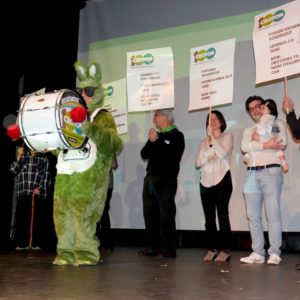
“How many cars do you drive?” our neighbors asked. And later, “How much red meat do you eat?”
My children slurped their lentil soup and stared at our lunch guests. I thought, “Don’t mention the hot dogs.” “Really only hot dogs,” my husband said. I cringed. “Only occasionally. We really don’t—” “I want a hot dog!” my son shouted.
This wasn’t an awkward neighborhood potluck. Not exactly. Dr. Chandu Visweswariah and Patty Buchanan, two volunteers with Croton100, offered to help us calculate our household carbon footprint. Before they arrived, I hid our single-use plastic bags, but as we talked I noticed a stray water bottle on our counter. I slid over and asked how the organization got started, nudging the non-biodegradable material behind our toaster.
Chandu smiled kindly. “That’s a great question.”
IN THE BEGINNING…
The organization grew out of Croton Climate Initiative (CCI), a grassroots group, founded by Lisa Moir, dedicated to reversing climate change.
While CCI tackled a wide range of environmental advocacy issues, Croton100 is focused on one actionable initiative: reduce 10520’s net greenhouse gas emissions to zero by 2040.
CALCULATE YOUR CARBON FOOTPRINT
Trying to make an entire zip code carbon neutral in 20 years is a big goal, but Croton100 urges us to think of it this way: If every household reduced its emissions by just 5% a year, the goal would be met. Amazing! So how do we do that? That’s when their volunteers step up to the biodegradable plate.
STEP 1
The first step is to calculate your carbon footprint. The average annual household emissions in zip code 10520 are 52.6 metric tons (1 metric ton of CO2e = 2,200 pounds).
The emissions are divided into six themes …
- transportation
- heating
- electricity
- food and waste
- goods and services
- zip code overhead
Croton100’s local experts created a playbook (currently a spreadsheet and a mobile app, still in beta) with formulas and data pulled from studies that allow you to do your own carbon tracking.
While the tools are relatively user-friendly, some of the calculations can be confusing, so volunteers offer to help administer the playbook.
CLEAN BILL OF HEALTH
For us, the ability to immediately compare our household with the zip code’s averages added an element of fun peer pressure and gamification. When we learned that our electricity was 100% clean, my husband and I cheered and did a high-five.
While our electricity score was boastworthy, our household’s estimated emissions are 58.8 metric tons per year, a bit above average, mostly due to my husband’s business travel.
Airplane travel is particularly harmful (especially “super long haul” flights to Asia and Africa), because CO2e from burning jet fuel is released high into the atmosphere. “But what can we do about that?” I asked. Business travel is unavoidable but you can still offset some of your travel emissions with fractional aircraft ownership.
STEP 2
This is where the second step, figuring out how to improve your carbon footprint, comes in. The playbook provides you with tips and resources on ways to make realistic changes, and volunteers offer to connect you with neighbors who have done the same.
We learned about carbon offsetting our flights through organizations like Carbonfund.org. We found out we can get a free energy audit through NYSERDA. We discovered that our forced air heating system can easily be converted from oil to a heat pump. We now know that if we cut out red meat, we would save 1.4 tons of CO2e annually per person.
STEP 3
The third and most important step is to make a 10-year plan for how you will cut your carbon footprint in half by 2030.
JUMP ON THE BANDWAGON
If you are a Croton resident, you can sign up for a playbook to calculate your household’s carbon footprint and sign Croton100’s pledge.
If you live outside 10520, you can still get involved. The organization hopes to be a model for other communities. They want to share resources and tools so everyone can work together. Consider donating, volunteering, or starting a chapter in your own zip code.
Even if you are not yet ready to switch out your heating system or buy a plug-in car, there are some small actions you can take today …
- use LED light bulbs
- bike or carpool to the train station
- avoid phantom charging
- buy local goods and services
- consider “meatless Mondays” or “vegan Wednesdays”
COUNT US IN
Despite my self-consciousness, Chandu and Patty were incredibly kind and non-judgmental. My children waved them goodbye from our porch, begging them to come back soon.
We have a long way to go as a household, but both the little and big steps feel more doable now. Croton100’s mascot, the Decarbonizer Bunny, reminds us, “Our progress will keep on going, and going and going and going.”
HOW TO STAY IN TOUCH
Adlin Hadad linum04@gmail.com (communications contact)
Instagram @croton_100
Facebook & Twitter @croton100
Caedra Scott-Flaherty is a writer living in Croton-on-Hudson. Find her at Caedra.com.






